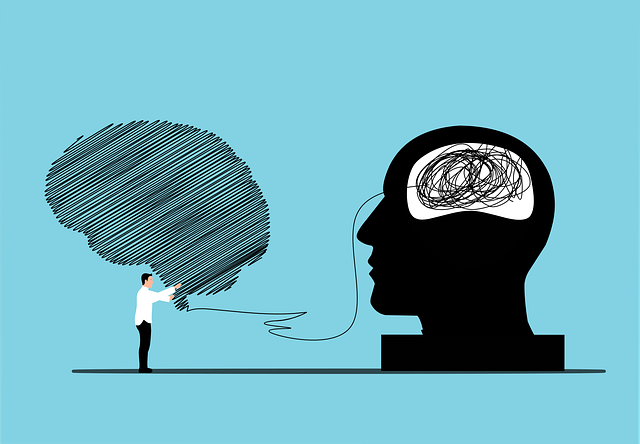Anxiety disorder treatment begins with understanding the condition, diagnosed by mental health professionals using criteria from manuals like the DSM-5. Personalized therapeutic methods include Cognitive Behavioral Therapy (CBT), Exposure Therapy, and Mindfulness-Based Therapies. CBT helps change negative thought patterns, while Exposure Therapy gradually exposes patients to feared stimuli. Structured programs combine tailored evidence-based techniques for effective symptom management. Integrative strategies, including mindfulness practices and lifestyle changes, offer long-term recovery solutions with group therapy enhancing support and learning.
Anxiety disorders are prevalent mental health challenges, characterized by persistent and excessive worry or fear. This article explores comprehensive strategies for managing these conditions, focusing on both short-term relief and long-term recovery. We’ll delve into understanding anxiety disorders, including symptoms and diagnosis, and examine therapeutic approaches proven effective in treating them. Additionally, we’ll highlight specialized panic disorder therapy programs and discuss integrative strategies for sustained well-being. Discover practical steps towards conquering anxiety and reclaiming your life.
- Understanding Anxiety Disorder: Symptoms and Diagnosis
- Therapeutic Approaches for Effective Treatment
- Panic Disorder Therapy Programs: A Focused Approach
- Integrative Strategies for Long-Term Management and Recovery
Understanding Anxiety Disorder: Symptoms and Diagnosis

Anxiety disorder treatment begins with understanding the condition itself. Anxiety disorders are characterized by excessive and persistent fear or worry that interferes with daily life. Symptoms can include rapid heartbeat, shortness of breath, sweating, trembling, and a feeling of losing control. Individuals with anxiety disorders often experience significant distress in various situations, such as social settings (social anxiety treatment), work environments, or even when facing common stressors.
Diagnosis involves a comprehensive evaluation by a qualified mental health professional who will assess the intensity and impact of symptoms on the individual’s life. They may use specific criteria from diagnostic manuals like the DSM-5 to determine if the symptoms meet the requirements for Generalized Anxiety Disorder (GAD treatment), Panic Disorder, or other related conditions. This process is crucial in tailoring effective anxiety disorder treatment strategies to meet the unique needs of each person.
Therapeutic Approaches for Effective Treatment

The effective treatment of anxiety disorders, including panic disorder, often involves a range of therapeutic approaches tailored to the individual’s specific needs. Cognitive Behavioral Therapy (CBT) is a well-established method that focuses on identifying and changing negative thought patterns and behaviors contributing to anxiety. This therapy equips individuals with coping strategies to manage their symptoms and face anxious situations more effectively. For instance, in social anxiety treatment, CBT can help patients challenge irrational fears and beliefs related to social interactions.
Additionally, Exposure Therapy is a powerful tool where patients are gradually exposed to feared stimuli in a safe environment. This process allows individuals to confront and overcome their anxieties, leading to reduced symptoms over time. Other therapeutic techniques, such as Mindfulness-Based Therapies, teach present-moment awareness and non-judgmental acceptance of thoughts and feelings, which can be particularly beneficial for Generalized Anxiety Disorder (GAD) treatment. These comprehensive approaches aim to empower individuals with the skills needed to manage their anxiety disorders successfully in the long term.
Panic Disorder Therapy Programs: A Focused Approach

Panic Disorder Therapy Programs are specifically designed to target and alleviate the symptoms associated with this specific condition. These programs take a focused approach, recognizing that panic attacks and their underlying causes vary greatly from person to person. Through comprehensive assessments, therapists tailor treatments to individual needs, addressing both the physical and psychological aspects of panic disorder. Techniques such as cognitive-behavioral therapy (CBT) are commonly employed to help individuals identify and change negative thought patterns contributing to fear and anxiety.
In addition to CBT, programs may incorporate exposure therapy, where gradual and controlled exposure to feared situations or triggers helps desensitize individuals to their anxiety. This structured approach equips clients with coping strategies, empowers them to manage symptoms effectively, and promotes a greater sense of control over their lives. By combining these evidence-based methods, panic disorder therapy programs offer a powerful tool in the quest for successful anxiety disorder treatment.
Integrative Strategies for Long-Term Management and Recovery

Anxiety disorder treatment often benefits from integrative strategies that combine various therapeutic approaches for long-term management and recovery. By combining techniques like cognitive behavioral therapy (CBT), mindfulness practices, and lifestyle changes, therapists can create a personalized program tailored to each individual’s needs. This holistic approach not only addresses the symptoms of anxiety but also equips individuals with coping mechanisms to navigate stress and triggers effectively.
For specific types of anxiety disorders, such as social anxiety treatment or Generalized Anxiety Disorder (GAD) treatment, targeted interventions can be particularly effective. For instance, exposure therapy for panic disorder therapy gradually exposes individuals to feared situations in a safe environment, helping them overcome their anxieties. Additionally, group therapy sessions foster a supportive community where individuals can share experiences and learn from one another, enhancing the overall effectiveness of anxiety therapy.
Anxiety disorder treatment is a comprehensive process that involves various therapeutic approaches, from understanding symptoms and diagnosis to tailored panic disorder therapy programs. Integrative strategies for long-term management offer a holistic path to recovery. By combining cognitive-behavioral therapy, mindfulness practices, and lifestyle adjustments, individuals can effectively manage anxiety, reduce panic attacks, and enhance their overall well-being. Remember that seeking professional help is a vital step towards reclaiming control over one’s life and fostering resilience against anxiety disorders.

